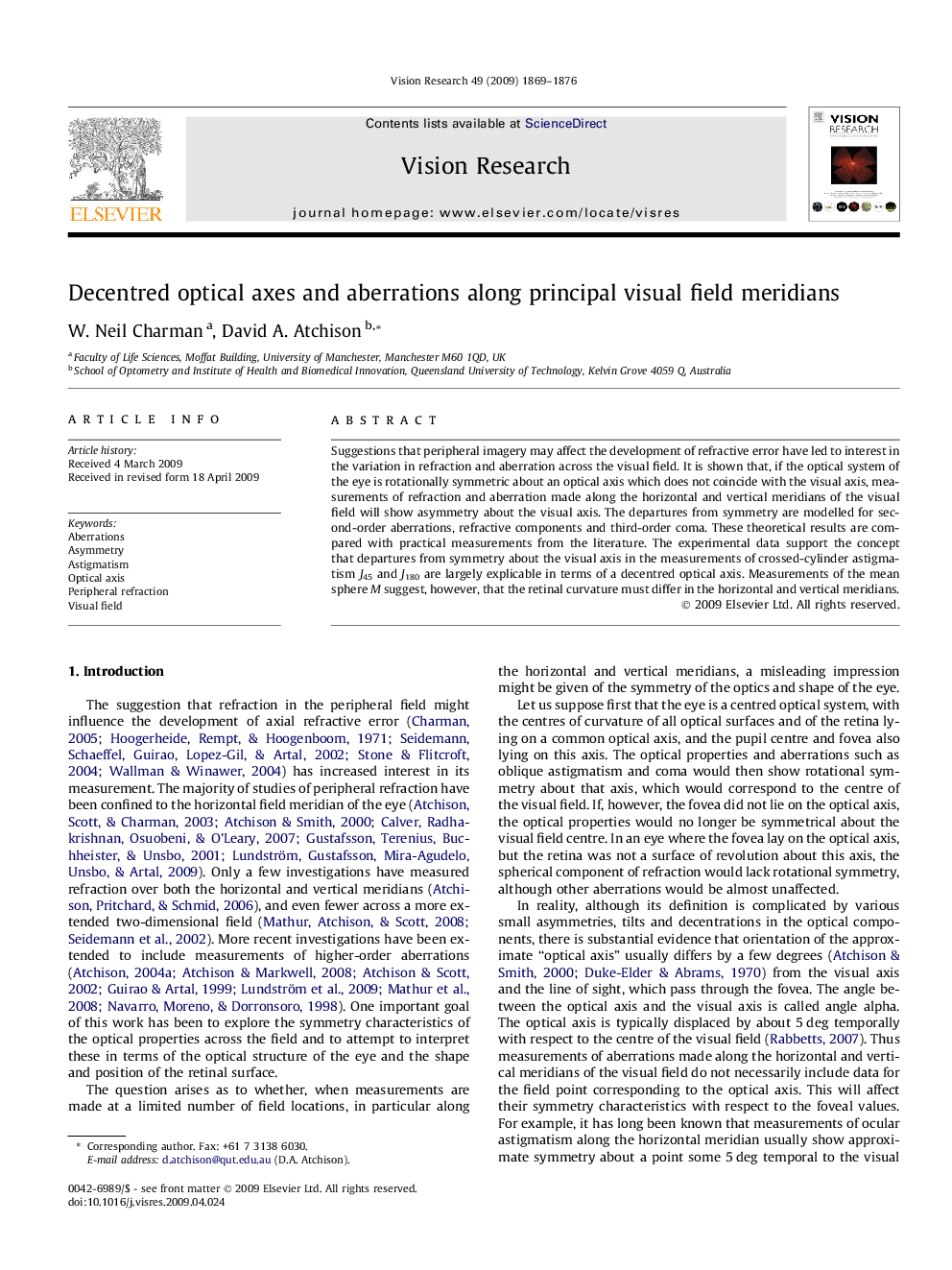| Article ID | Journal | Published Year | Pages | File Type |
|---|---|---|---|---|
| 4035267 | Vision Research | 2009 | 8 Pages |
Suggestions that peripheral imagery may affect the development of refractive error have led to interest in the variation in refraction and aberration across the visual field. It is shown that, if the optical system of the eye is rotationally symmetric about an optical axis which does not coincide with the visual axis, measurements of refraction and aberration made along the horizontal and vertical meridians of the visual field will show asymmetry about the visual axis. The departures from symmetry are modelled for second-order aberrations, refractive components and third-order coma. These theoretical results are compared with practical measurements from the literature. The experimental data support the concept that departures from symmetry about the visual axis in the measurements of crossed-cylinder astigmatism J45 and J180 are largely explicable in terms of a decentred optical axis. Measurements of the mean sphere M suggest, however, that the retinal curvature must differ in the horizontal and vertical meridians.
